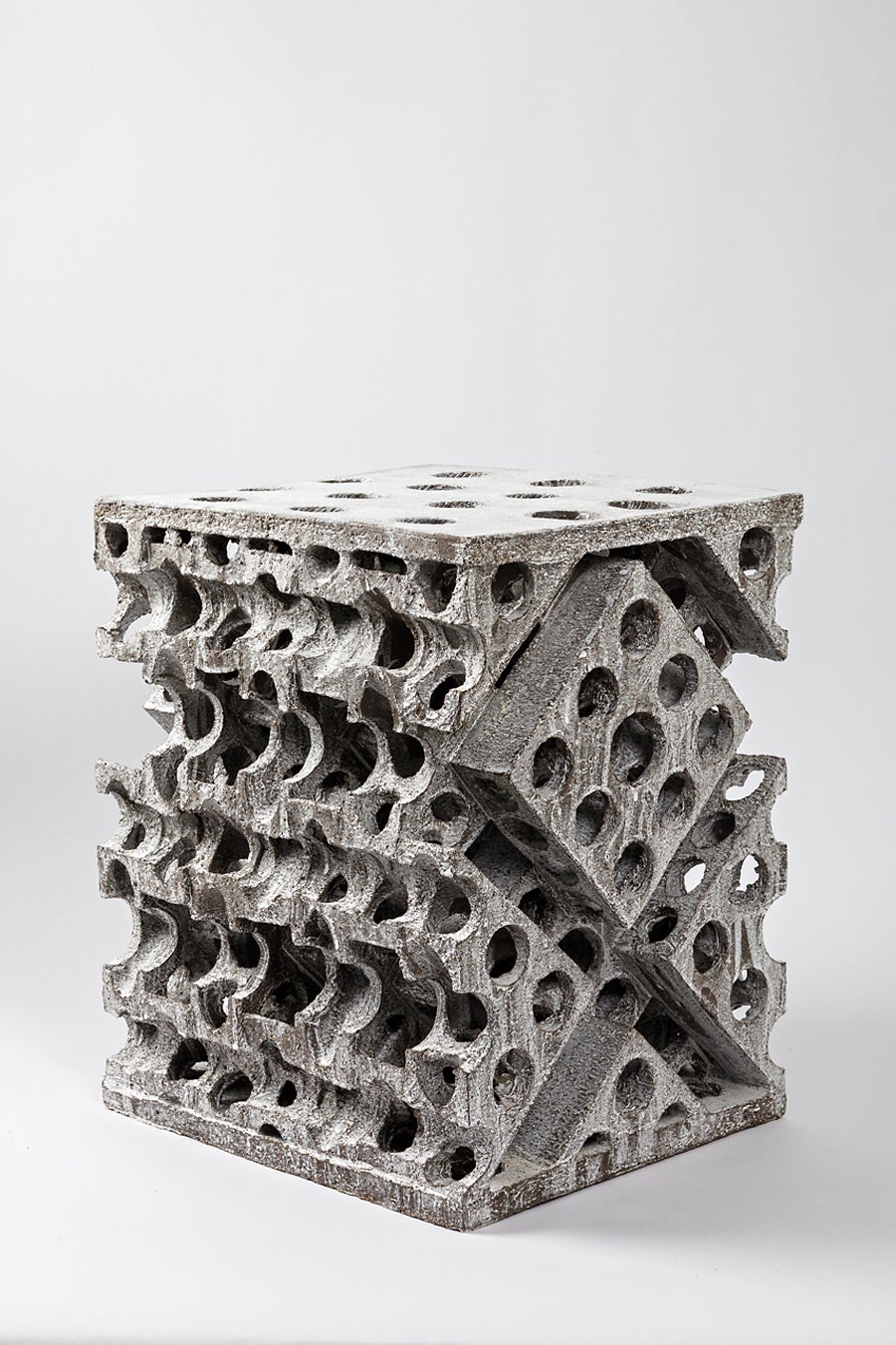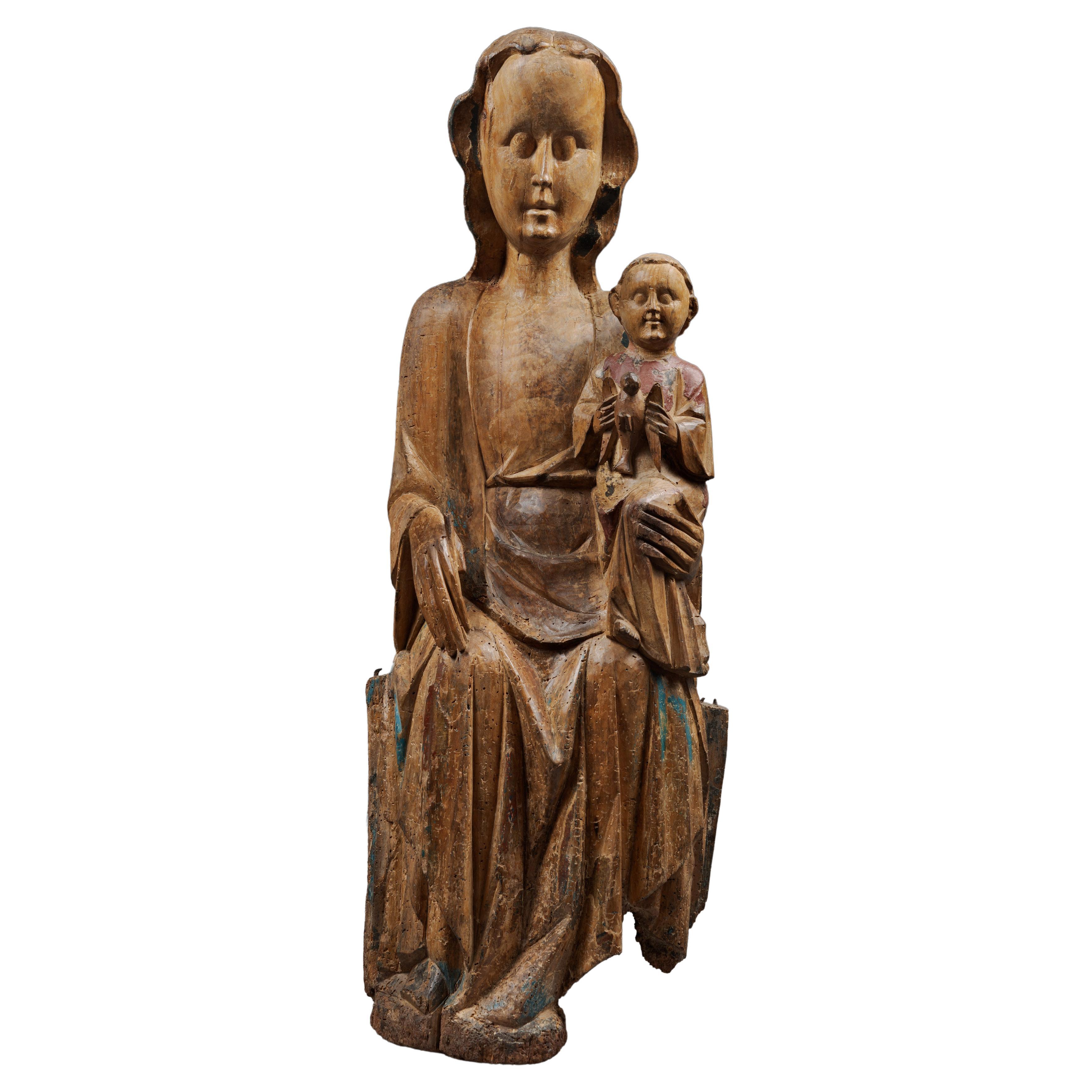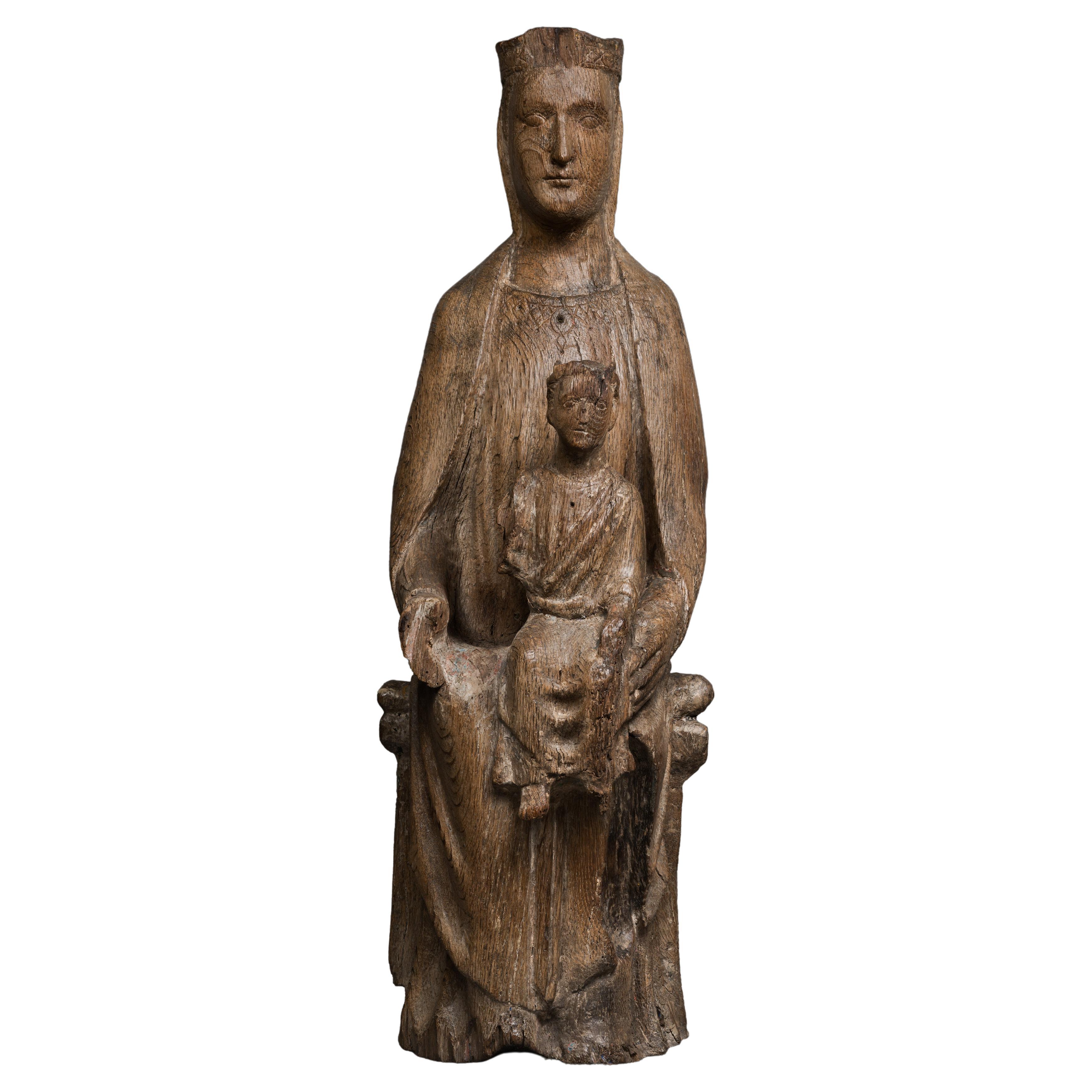Items Similar to Virgin and Child in Majesty, also known as "Sedes Sapientae"
Want more images or videos?
Request additional images or videos from the seller
1 of 7
Virgin and Child in Majesty, also known as "Sedes Sapientae"
About the Item
VIRGIN AND CHILD IN MAJESTY, ALSO KNOWN AS "SEDES SAPIENTIAE"
ORIGIN : SPAIN, CATALOGNE
PERIOD: EARLY 13th CENTURY
Height : 95 cm
Width : 32 cm
Depth : 28 cm
Softwood
No polychromy
In the middle of the 12th century, the Virgin took her place in churches, seated in Majesty, serving as a throne for her son Jesus. She is then called Sedes Sapientiae, meaning the Throne of Wisdom.
At that time, she is not represented for herself and only exists because she has been designated as Theotokos, the mother of God, at the Council of Ephesus in 431, where the divine nature of Christ was proclaimed from his birth.
The upright and perfectly hieratic bust of this Virgin and Child in Majesty is seated on a throne-bench. She is dressed in a tunic with a rounded neckline and covered with a fine mantle placed on her narrow shoulders. The supple and natural drapery follows the lines of the body.
Large curls frame her face with delicate and regular features, a long straight nose, almond-shaped eyes, and small lips.
She supports the Infant Jesus with her left hand. Like his mother, he is dressed in a long tunic, and his little feet are visible in the folds. He holds a small sphere in his left hand, while with his right hand, he gestures in blessing. The face of Christ bears a strong resemblance to his mother’s one, and he gives a slight smile.
The position of the Child is no longer as hieratic, nor frontal or central as in the early 12th century, but his face still turns towards the faithful.
The 13th century indeed emerges as a period of transition in the artistic domain. The statuary, while retaining certain characteristics still belonging to the habits of the previous century, also develops new formal solutions.
As a result, Mary maintains a hieratic and frontal position, while her son shifts to place himself well to the left on her knee. Similarly, while the Virgin seems perfectly still, Jesus, on the other hand, appears much more animated, especially in the positioning of his hands. His left hand holds the orb, and judging by the raised right arm directed towards the faithful, one can easily imagine that he was making a gesture of blessing.
The influence of the Sedes Sapientiae from previous centuries still seems particularly prevalent in this work.
These few characteristics allow dating this Spanish Virgin to the early 13th century
- Dimensions:Height: 37.41 in (95 cm)Width: 12.6 in (32 cm)Depth: 11.03 in (28 cm)
- Style:Gothic (Of the Period)
- Materials and Techniques:
- Place of Origin:
- Period:
- Date of Manufacture:13th Century
- Condition:Wear consistent with age and use.
- Seller Location:Saint-Ouen, FR
- Reference Number:1stDibs: LU3115337984302

About the Seller
5.0
Vetted Seller
These experienced sellers undergo a comprehensive evaluation by our team of in-house experts.
Established in 2016
1stDibs seller since 2017
153 sales on 1stDibs
Typical response time: 7 hours
- ShippingRetrieving quote...Ships From: Paris, France
- Return PolicyThis item cannot be returned.
More From This SellerView All
- Virgin and Child in MajestyLocated in Saint-Ouen, FRVirgin and child in majesty Origine: castille Epoque: early 14th century Measures: Height: 72cm Length: 30cm Depth: 25cm Polychrome and gi...Category
Antique 15th Century and Earlier Figurative Sculptures
MaterialsWood
- Important Virgin and Child in MajestyLocated in Saint-Ouen, FRImportant virgin and child in majesty Origin : Germany Or Eastern France Époque : Second Half Of The 13th Century Height: 104.5 cm Length: 3...Category
Antique 15th Century and Earlier Figurative Sculptures
MaterialsOak
- Virgin and Child in Majesty with a BirdLocated in Saint-Ouen, FRVirgin and child in majesty with a bird Origin: Southern Germany Or Austria Period: Late 13tth - Early 14th Century Height : 87.5 cm Length : 32 cm Depth : 19 cm Lime ...Category
Antique 15th Century and Earlier Figurative Sculptures
MaterialsWood
- Exceptional Virgin and Child in Majesty or "Sedes Sapientiae", Throne of WisdomLocated in Saint-Ouen, FRExceptional virgin and child in majesty or “Sedes Sapientiae”, throne of wisdom Origin: southwestern France. Period: late 12th - early 13th cen...Category
Antique 15th Century and Earlier Figurative Sculptures
MaterialsWalnut
- Important Sedes Sapientiae Virgin and Child also called "Throne of Wisdom"Located in Saint-Ouen, FRIMPORTANT SEDES SAPIENTIAE VIRGIN AND CHILD ALSO CALLED « THRONE OF WISDOM » ORIGIN: FRANCE, BURGUNDY PERIOD: EARLY 13th CENTURY Height : 75 cm Len...Category
Antique 15th Century and Earlier Figurative Sculptures
MaterialsOak
- Gothic Virgin and Child with a PhylacteryLocated in Saint-Ouen, FRThis Virgin and Child is wearing clothes with a limited number of folds and showing a thickness characteristic of the Burgundy region. As a result of the presence in the region of th...Category
Antique 15th Century and Earlier French Gothic Figurative Sculptures
MaterialsWalnut
You May Also Like
- Antique Enthroned Virgin Mary and ChildLocated in Doha, QAThis extraordinary museum piece Enthroned Virgin Mary with the child on her lap comes from the Rhone region in France. The saint symbol and protector ...Category
Antique 15th Century and Earlier French Gothic Figurative Sculptures
MaterialsWood, Walnut
- Seated Virgin with Child (Sedes Sapientiae) from the 12th Century in SpainLocated in Madrid, ESTechnique: Tempera and oil on wood Dimensions: 25 x 11 x 8 cm Description: This exceptional work from the 12th century represents the Seated Virgin with Child (Sedes Sapientiae), standing out as an artistic treasure from medieval Spain. The portrayal of the Virgin enthroned with the Child on her lap is emblematic of Romanesque art, and this particular piece is a valuable and authentic example of that era. The current polychromy belongs to the Gothic period and overlays the original Romanesque layer. It is crucial to highlight that the current state of the artwork is the original, without any cleaning interventions, imparting a unique authenticity. The work exhibits architectural characteristics typical of Romanesque art, evident in the sides of the throne. The rigidity and symmetry characteristic of this style are reflected in the firm presentation of the Baby Jesus, noticeable in his gesture while holding his son. The Virgin wears a crown, symbolizing her royal character as the Queen of Heaven and Creation. Both figures retain traces of polychromy on the face and attire, adding layers of history and authenticity. While similar Romanesque Virgin...Category
Antique 15th Century and Earlier Figurative Sculptures
MaterialsFruitwood
- Georges Jouve Virgin and Child, 1944By Georges JouveLocated in Saint Ouen, FRGeorges Jouve Virgin and child Black glazed ceramic with iridescent metallic luster Bears the signature on the back as well as the alpha symbol, c...Category
Vintage 1940s French Figurative Sculptures
MaterialsCeramic
- Ceramic Virgin with ChildLocated in grand Lancy, CHCeramic virgin with child.Category
Vintage 1950s European Figurative Sculptures
MaterialsCeramic
- Virgin and the Child, Mosan Region, Second Half of 13th CenturyLocated in Bruxelles, BEA polychrome sculpture depicting the Virgin and the Child Mosan region, second half of 13th century Polychrome wood 73 x 29 X 12 cm Provenance : Former Belgian private collection from the beginning of the 20th century This remarkable early artwork portrays the Enthroned Virgin and Child, also known as Sedes Sapientiae, which translates to the 'Seat of Wisdom...Category
Antique 15th Century and Earlier Belgian Medieval Figurative Sculptures
MaterialsWood
- Large Virgin and Child in polychrome wood, Spain, 16th CenturyLocated in PARIS, FRLarge painted and carved wooden Virgin and Child in the round, representing the Virgin and Child carrying the globe. The theme of the Virgin and Child is the most represented in all ...Category
Antique 1630s Spanish Renaissance Figurative Sculptures
MaterialsWood
Recently Viewed
View AllMore Ways To Browse
Long Work Bench
Feather Breastplate
Nude Outdoor Statue
1860 Soldier Statues
Pilet Bronze
Royal Dux Art Deco Figure
Gagne Bronze
Classical Greek Style
Niche Sculptures
Antique Italian Hairs
Pre Columbian Gold Artifacts
Ufos J L Lobmeyr Collection
19th Century Italian Marble
Marble Sculpture Young
Table Sculpture Green
Marble Sculpture 1900
Sculpture Francais
Carved Wooden Plinth





